'We are not done expanding the rail network,' says PM Wong at opening of Thomson-East Coast Line Stage 4
The seven new stations on Stage 4 of the line will officially open for passenger service on Sunday (Jun 23).

Prime Minister Lawrence Wong takes a walkabout tour of Siglap MRT station during the opening ceremony of Thomson-East Coast Line Stage 4 on Jun 21, 2024. (Photo: CNA/Jeremy Long)

This audio is generated by an AI tool.
SINGAPORE: The fourth stage of the Thomson-East Coast Line (TEL4) will improve connectivity for residents, but “it will get even better” in the coming decade with the opening of more MRT lines, said Prime Minister Lawrence Wong.
“Over the next decade, we will open over 50 new MRT stations, including the new Jurong Region Line and Cross Island Line – our seventh and eighth MRT lines,” Mr Wong said at the opening ceremony of TEL4 on Friday morning (Jun 21).
The ceremony was held at Marine Parade station, one of seven new stations along TEL4. The other stations are Tanjong Rhu, Katong Park, Tanjong Katong, Marine Terrace, Siglap and Bayshore.
The seven new stations opened to the public for a preview from noon to 9pm on Friday, before passenger service officially starts on Sunday.
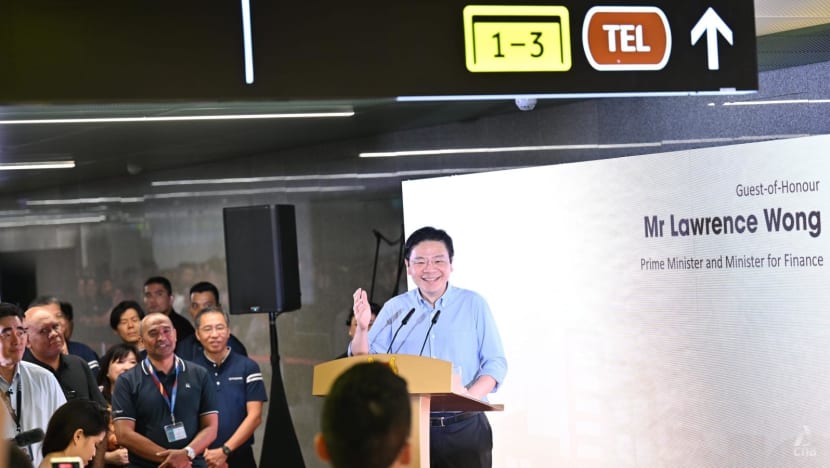


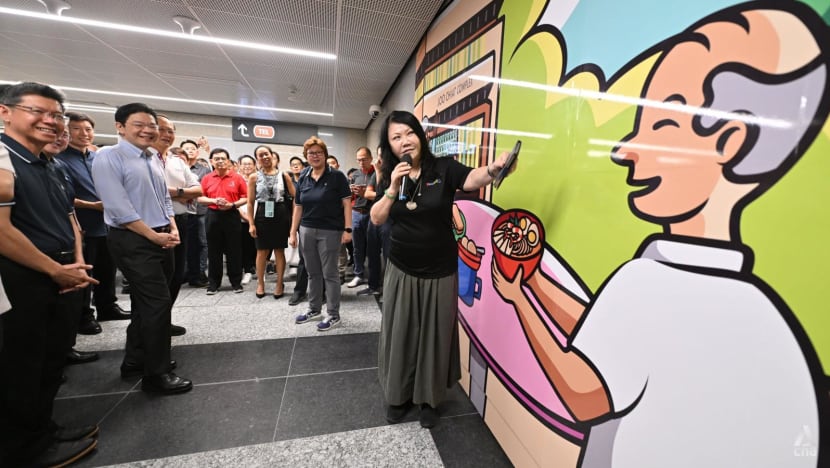


Mr Wong, who is also Finance Minister, recounted his days growing up in Marine Parade in the 1980s.
“Back then, I wished there was an MRT station near my home in Marine Terrace, then I could have taken the train directly,” he said.
He added that while he no longer lives in the area, he is glad residents can enjoy faster public transport that is affordable.
Students will also benefit, with more than 10 schools within walking distance of a TEL4 station.
TEL4 will also bring East Coast closer to Singaporeans from other parts of the island, noted Mr Wong, adding that popular food options in areas such as Joo Chiat and Katong would also be more accessible.
He thanked residents along the TEL4 stretch for their patience while construction works were underway.
Transport Minister Chee Hong Tat was also at the opening ceremony, along with Members of Parliament for constituencies which TEL4 passes through.
They included Deputy Prime Minister Heng Swee Keat of East Coast GRC, Manpower Minister Tan See Leng and Speaker of Parliament Seah Kian Peng of Marine Parade GRC, as well as Mr Lim Biow Chuan of Mountbatten SMC.
Former Prime Minister and former Marine Parade MP Goh Chok Tong and former Transport Minister Khaw Boon Wan were also in attendance, along with representatives from rail operator SMRT, which runs the TEL.
There were also performances by students from Tao Nan School, and local singers Lim Zi Yi and Karyn Wong.
“IT WILL GET EVEN BETTER” FOR COMMUTERS
With the opening of TEL4, 27 out of 32 TEL stations are now operational, said Mr Wong.
For residents farther east, the fifth stage of the line – connecting Bayshore and Sungei Bedok – will be completed by 2026, while an extension to connect the TEL to Changi Airport will be completed in the mid-2030s, together with the opening of Terminal 5.
When completed, the TEL’s eastern end will connect to Changi Airport, while its northern end will connect to the Johor Bahru-Singapore Rapid Transit System Link.
“When the TEL is fully completed, our train network will connect Singaporeans from their doorstep to the world,” said Mr Wong.
He said that the TEL is just part of the government’s investment in Singapore’s public transport system.
“We are certainly not done expanding the rail network,” he said.
The upcoming Jurong Region Line and Cross Island Line will improve connectivity within the western region, and connect the eastern, northeastern and western regions respectively.
In the coming years, new stations and extensions on existing lines, such as the North-South Line, Circle Line and Downtown Line, will also be opened.
Ultimately, by the 2030s, eight in 10 households will be within a 10-minute walk of a train station, said Mr Wong.
“Millions of Singaporeans and residents can reach their destinations using public transport easily and conveniently, day in and day out,” he said.
Mr Wong added that, in Singapore, when there are plans made to build something, “eventually it gets done”.
“In many other countries in the world, including in advanced countries, people talk about doing projects, but very often it’s not so easy to get things done,” he said.
There could be issues with budgeting, resistance from residents or even political reasons, he said.
“Sometimes, political parties change and the new party comes into power and they shelve the plans from the previous party,” he said.
“Here in Singapore, when we say we will do something, we make sure we deliver it.”





A LINE FOCUSED ON THOSE WITH SPECIAL NEEDS
Other than improving connectivity, the TEL has also been designed to ensure accessibility for those with special needs, said Mr Wong.
The Land Transport Authority (LTA) had consulted widely with community partners, such as the Singapore Association for the Deaf and Singapore Association for the Visually Handicapped, to incorporate inclusive features when designing TEL stations, he said.
For instance, station signs have larger fonts, with sharper contrast and less clutter, and there is more braille text to aid the visually impaired.
Hearing enhancement systems have been installed at the passenger service centres in TEL stations, which minimise the background noise for commuters wearing hearing aids.
There are also more lifts and station entrances, to benefit those who face mobility challenges.
“These features will benefit persons with disabilities, but also seniors and families with young children. They will enable all Singaporeans to take the train comfortably and confidently,” said Mr Wong.
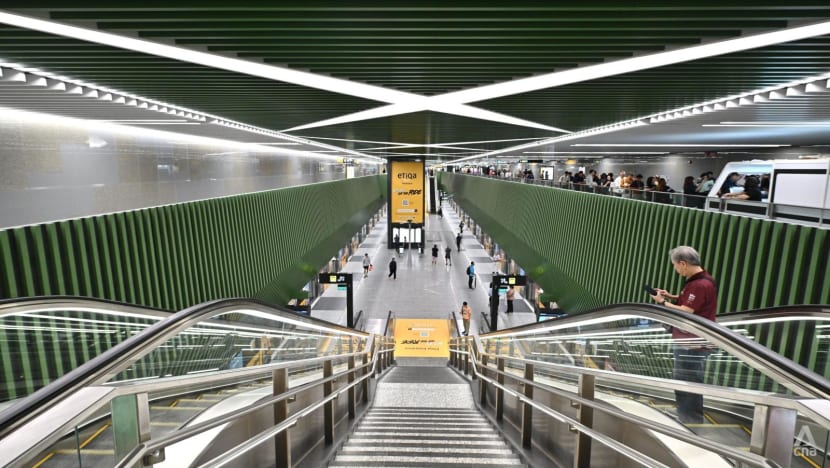



After his speech, Mr Wong spoke to SMRT and LTA staff, as well as TEL4 contractors.
He then took the train from Marine Parade to Siglap, where he spoke to representatives from the Singapore Civil Defence Force about its shelter conversion operations for train stations.
He also spoke to some students from Victoria School, which is located near Siglap station.
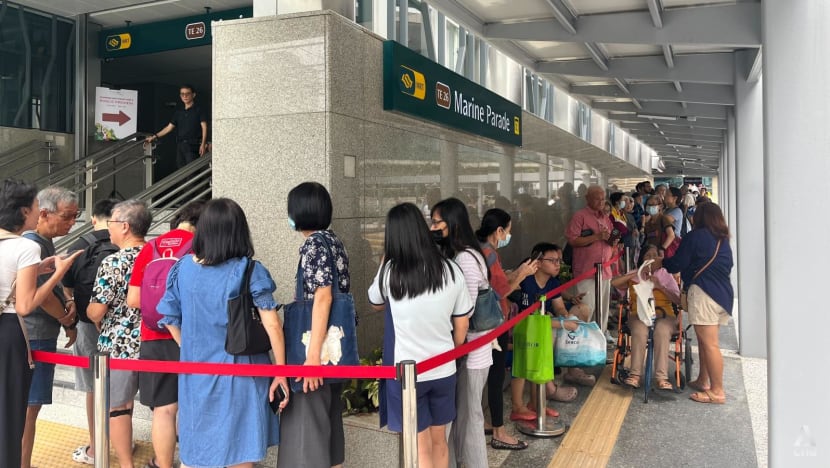
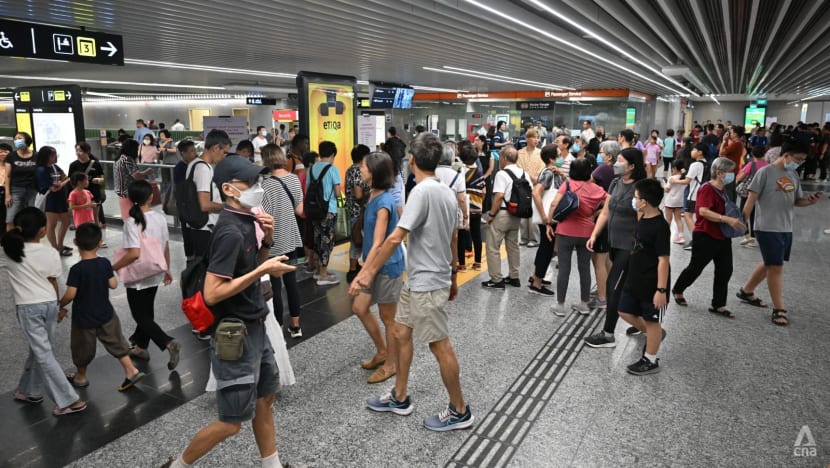

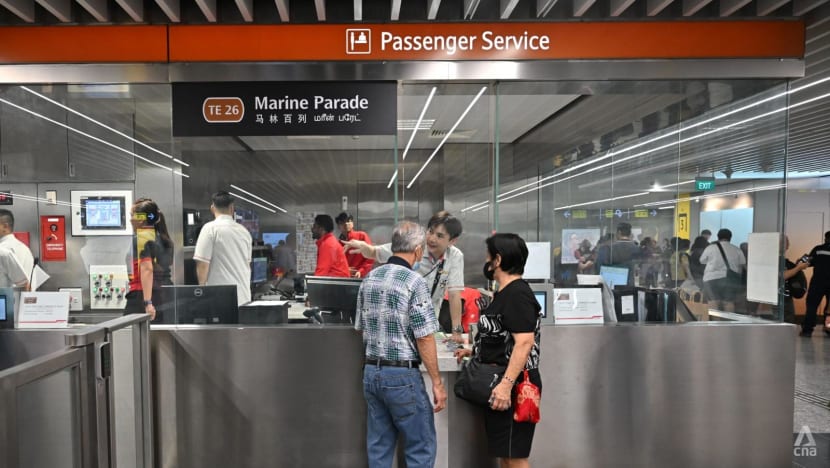

At 11.30am outside Marine Parade station, members of the public had formed a long line to await the opening of the TEL4 preview.
Among the earliest to get there was Marine Parade resident Jay Suresh, who said he has an avid interest in train stations.
“I personally love the MRT, I love getting off the train stations and seeing the different areas, all the shops,” said the 21-year-old.
Daily Cuts:

The intern at a tech firm said his commuting time to his workplace in Alexandra will be reduced by about 30 minutes with the opening of TEL4.
He currently takes the bus there, but he will soon be able to get to work via the TEL and the East-West Line with a change of trains at Outram Park station.
“It’s definitely a big improvement from having to take the bus everywhere,” he said.
















